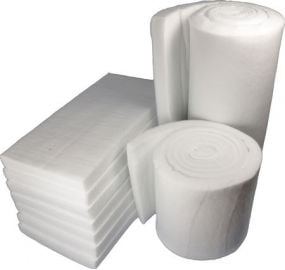Polyester Fiber Acoustic Panels
Showing all 7 results
-

Nankarrow GeoDeco™ Hexagon Felt Acoustic Panels
₹275.00 incl GST Select options -
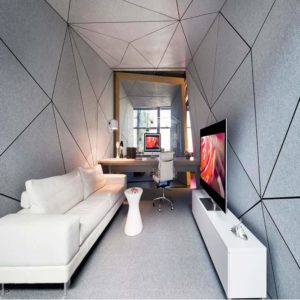
Nankarrow GeoDeco™ 9MM PET Polyester Fiber Felt Acoustic Panel
₹5,720.00 incl GST Select options -
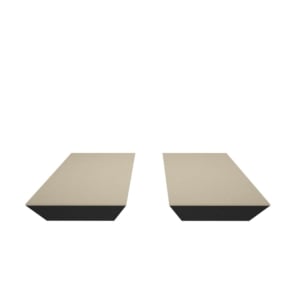
Nankarrow StudioPanel™ Broadband Acoustic Panel
₹4,400.00 incl GST Select options -

Nankarrow GeoDeco-Art™ HERRING PET Polyester Fiber Felt Acoustic Panel
₹8,800.00 incl GST Select options -
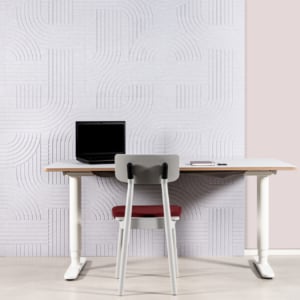
Nankarrow GeoDeco-Art™ CURVE PET Polyester Fiber Felt Acoustic Panel
₹8,800.00 incl GST Select options -
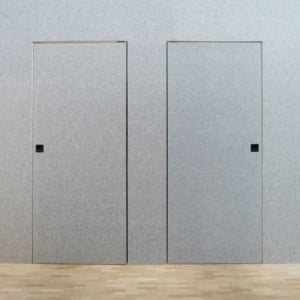
Nankarrow GeoDeco™ 12MM PET Polyester Fiber Felt Acoustic Panel
₹7,040.00 incl GST Select options
Polyfill, short for polyester fiberfill, is an eco-friendly material commonly used in acoustic treatment applications. In the context of acoustics, polyfill is often used inside bass traps and acoustic panels to enhance their performance. Polyfill, or polyester fiberfill, is often considered more eco-friendly compared to some other acoustic materials due to several reasons:
- Recyclability: Polyester, the material used to make polyfill, is recyclable. This means that, in certain cases, polyfill can be recycled and reused in the production of new polyester products. Recycling helps reduce the demand for new raw materials and minimizes waste.
- Durability and Longevity: Polyester is known for its durability and resistance to wear and tear. Products containing polyfill can have a longer lifespan, reducing the frequency at which they need to be replaced. This longevity contributes to a reduction in overall resource consumption and waste.
- Reduced Energy Consumption: The manufacturing process for polyester is often more energy-efficient compared to some other materials. Lower energy consumption in production contributes to a smaller environmental footprint.
- Versatility and Lightweight Nature: Polyfill is a lightweight material, which means it requires less energy for transportation compared to heavier alternatives. Additionally, its versatility makes it suitable for various applications, and its use in acoustic treatments, for example, can contribute to energy-efficient solutions for sound control.
- Less Water Usage: The production of polyester typically requires less water compared to certain natural fibers like cotton. Reduced water usage is an important consideration for the environmental impact of a material.
- Low Impact on Agriculture: Unlike natural fibers that require agricultural cultivation, polyester is a synthetic material derived from petrochemicals. This means it doesn’t contribute to issues such as deforestation or the use of large amounts of agricultural land.
It’s important to note that while polyfill has some eco-friendly characteristics, it is still a synthetic material derived from petroleum-based sources. The environmental impact of polyester, including polyfill, is not entirely negligible, and efforts are ongoing to improve sustainability in the textile and materials industry.
Here’s how polyfill is used in acoustic applications:
- Density Control: Polyfill is a lightweight and fluffy material, and its density can be adjusted to control the absorption characteristics of acoustic panels or bass traps. By varying the amount of polyfill inside a trap, you can tailor its performance to target specific frequency ranges.
- Improved Low-Frequency Absorption: When added to bass traps, polyfill helps improve low-frequency absorption. The material helps to break up sound waves and prevents them from bouncing around the room, reducing issues like standing waves and bass resonance.
- Enhanced Panel Performance: Acoustic panels with polyfill inside them can have improved absorption properties. The addition of polyfill can extend the effective absorption range of the panel, making it more versatile in addressing a broader range of frequencies.
- Diffusion: In some cases, polyfill is used in combination with diffuser designs. It can be strategically placed within a diffuser to enhance its performance by scattering sound waves more effectively.
- Consistency and Uniformity: Polyfill can be used to ensure consistent absorption characteristics throughout the interior of an acoustic panel or bass trap. This helps create a more uniform response to sound waves across different frequencies.
- DIY Acoustic Projects: Polyfill is often used in do-it-yourself (DIY) acoustic projects. Many enthusiasts and professionals use polyfill when building their own bass traps or acoustic panels to customize the absorption characteristics based on the specific needs of their space.
- Airflow Resistance: Polyfill can affect the airflow resistance within an acoustic panel or bass trap. This property is essential in controlling how sound waves interact with the material. Adjusting the density and placement of polyfill allows for fine-tuning the airflow resistance to optimize acoustic performance.
- Fiber Structure: The structure of polyfill fibers can contribute to its acoustic properties. The arrangement and composition of the fibers impact how sound waves are absorbed and dispersed within the material. Different polyfill formulations may be chosen to achieve specific acoustic goals.
- Non-Allergenic and Fire-Retardant Options: In commercial applications, polyfill materials are often designed to be non-allergenic and fire-retardant to meet safety and health standards. This ensures that the acoustic treatment meets necessary regulations and can be used in various environments.
- Versatility in Acoustic Design: Polyfill’s versatility makes it a valuable component in the design of acoustic treatments. Whether applied to control low-frequency issues, enhance absorption in mid or high frequencies, or improve diffusion, polyfill can be adapted to meet the requirements of different acoustic challenges.
When incorporating polyfill into acoustic projects, it’s important to consider the overall acoustic goals, the specific frequencies that need addressing, and the design of the space. While polyfill is a common material in acoustic treatments, its effectiveness depends on how it’s integrated into the overall design and its compatibility with other acoustic materials and methods.
Polyfill in acoustic applications serves as a versatile material for adjusting the absorption and diffusion properties of bass traps, acoustic panels, and other sound treatment solutions. Its use contributes to creating a more controlled and balanced acoustic environment.

